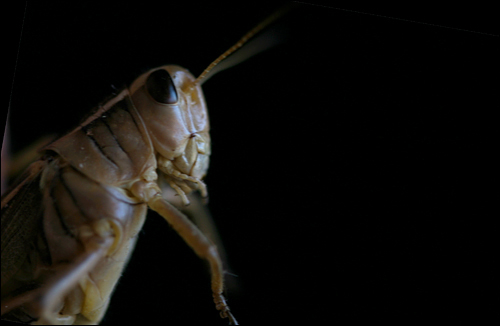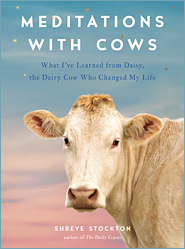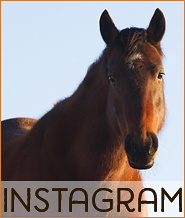Photo Tutorial: Window Light
☆ July 21, 2010
I have Farmily posts half-written and a self-imposed deadline of Monday for something completely unrelated, but, as all writers know, deadline = procrastination!! And so I thought I’d do a little tutorial on my grasshopper photograph, because truly, it is one of THE most rudimentary set-ups there could possibly be.
Total time between conjuring the thought “I’m going to take a grasshopper pic” (and seeing this final in my mind’s eye) and uploading the photo to my computer was about 90 seconds. No joke. And Photoshop was used only to resize the image for posting on the internet ~ the image has not been tweaked or adjusted.
Window light is gorgeous light; the shadows it creates have a very soft edge, and the light wraps around objects in a most beautiful manner. It also has an extremely high rate of fall-off. When your subject is close to the window, it is illuminated by the light coming in the window and the camera picks up on this light. But as you travel away from the window, the light becomes exponentially less powerful. It becomes dimmer. To such an extent, in such a short amount of space, that the camera can no longer ‘see’ it.
Here’s a diagram. If you can’t decipher it, that probably means you’re sane. I held the grasshopper by his hind legs with his face directed towards my kitchen window, which is a fairly small window. I determined the exposure for the grasshopper and knew that everything behind the grasshopper would be unexposed. Black. Thanks to fall-off.
We can see that window light illuminates things that lie further away from the window because our eyes can pick up on a vast range of light (exposures) at the same time. Film (or digital chip) is different ~ while it can record all manner of light, it can only record a certain range of exposure at one time. Therefore, at a certain distance away from the window, the light does not register to the camera at all when you are exposing for the subject closest to the window. While it depends on the intensity of the sun and the size of the window, this distance is generally measured in inches. Now, if I had used flash in the picture above (barf!yuck!) you would have seen various jars, stacks of papers, and a pineapple.
Regarding exposure in this situation: your camera settings might calculate this for you IF you use spot metering. Another trick is to hold your palm out, facing the camera, in the place you would like to meter (where your subject is). Make sure your hand fills your viewfinder and meter your hand (pressing halfway down on the shutter will accomplish this on most digital cameras). Note the exposure and set your camera as such using the Manual setting. And, digital cameras allow you to check your exposure after one shot and adjust accordingly, so play around.
As for equipment, I used a 100mm Macro lense for this shot on my Canon 30D body. I have three lenses: 28-70L zoom, 70-200L zoom, and 100Macro fixed. My camera body, a Canon 30D, is BOTTOM of the line ~ I believe it’s considered an amateur model and I know it’s not even being made anymore. But I’m not going to spend $5K on a camera body ~ an expensive camera does not guarantee anyone great photographs and great photographs can be made with a very basic camera. I DO believe in high quality lenses. (That’s why I only have three lenses, acquired over the course of many years!) The quality of glass does affect the end result ~ your photos will only be as good as your glass. So, my motto has always been cheap body, splurge on the lense.
Hope this helps and demystifies the process of this photo! It’s SO basic. Anyone can apply this technique ~ this light is particularly beautiful on faces.
Comments
19 Responses to “Photo Tutorial: Window Light”
Leave a Reply










July 21st, 2010 @ 11:27 am
:) so right. We have the same lenses (minus the macro). I love them, and shoot with a 20D!(verrry ‘out of date’) Plus some 35mm and medium format cameras… I get great results.
July 21st, 2010 @ 11:31 am
That was great! Simple and understandable – I also like the tid bit on lenses. Thank you very much!
July 21st, 2010 @ 11:41 am
i like it when you procrastinate!
thanks for the tips
good luck with the writing
July 21st, 2010 @ 12:01 pm
Finally another true believer in Glass! I’m surrounded by IT geeks that go out and get the newest best camera bodies when they come out…. I’m shooting with an old Rebel (yes low low end body) but I have some killer lenses and blow they guys out of the water with my work.
The most important part of photography is the person taking the photo….Shreve – your photos are so much better because you take them. A part of you are in each of them.
I can take a picture of anything, but if I’m not interested in the subject I’m photographing, it comes out ‘flat’. On the other hand, you give me some great old Neon sign or vast skies with clouds or a beautiful flower – I can knock your socks off with my puny Rebel.
Thanks for sharing you art and life with us all.
July 21st, 2010 @ 12:04 pm
I have an ‘old’ 30D, too! And the same Canon lenses, except I opted for the Tamron 28-75 f/2.8 because it was about a third the price of the comparable Canon lens, and it gets super-stellar reviews… Anyway, I love window light! It’s also great for taking self portraits. No shadows! Really great macro image of the hopper. I shoot primarily macro, and my favorite subject is arthropods, so I really appreciate your skill and artistry :-)
July 21st, 2010 @ 12:46 pm
Crap, I totally understood the diagram!
“a self-imposed deadline of Monday for something completely unrelated, but, as all writers know, deadline = procrastination!!”
LOL that too. Sigh. I had a self-imposed Monday deadline and met it Tuesday. Not *too* bad…
July 21st, 2010 @ 12:46 pm
You are a wonderful photographer! I just sent a link to this photo & this site to a friend of mine who is also a photographer. He does out of the ordinary wedding photos for a living & I just saw a spectacular photo HE did, so I’m enclosing a link to his site here too, with hopes that you will enjoy it.
http://www.brucemayhillblog.com/2010/07/hey-gang.html
July 21st, 2010 @ 1:27 pm
…and then I placed the thieving bastard in a spider’s web.
July 21st, 2010 @ 2:00 pm
ah – thank you – perfectly clear – only one question – while you’re doing all the metering & setting & adjusting – what do you do with the grasshopper?!
July 21st, 2010 @ 3:19 pm
dpa ~ holding it! I often only have one hand for the camera – it can be held and adjusted etc with just one :)
July 21st, 2010 @ 4:56 pm
I am so sane. Eyes glazed over…not you, though…never could quite grasp camera mechanics! :(
July 21st, 2010 @ 5:23 pm
So you held the poor little grasshopper by his hind legs, huh. No wonder he ate your camomile…….
July 21st, 2010 @ 5:37 pm
C ~ yes, I’m *such* a monster.
July 21st, 2010 @ 6:47 pm
I totally agree with you on window light. I have a west facing glass door in my dining room and the evening light is so wonderful. My husband got a new macro lens last year and I played with the gorgeous evening light photographing produce. I know, it’s weird, but the food is beautiful in the window light. Here is a link to some of the food pictures using only window light.
http://www.flickr.com/photos/kathymtb/sets/72157617764253761/
July 21st, 2010 @ 7:31 pm
TGW ~ Gorgeous! my mouth is watering…..
July 21st, 2010 @ 8:42 pm
Great tutorial Shreve! Window light absolutely makes the biggest difference. And I adore my 100mm macro lens. Such a great tool to have in my camera bag.
July 22nd, 2010 @ 6:04 am
Awesome photo.
…you were holding the grasshopper by its legs? Well, that certainly explains the expression in its beady lil’ eyes.
Hmm. I need to drag out my Canon Rebel. I didn’t spend a huge amount on the body, but didn’t find out about the importance of glass over body until afterward. Still, I have the money now to invest in some good glass. I oughtta do that soon…
Sybann: Nonono, you don’t put thieving grasshoppers in spider webs! You use ’em as crappie bait!
July 22nd, 2010 @ 11:57 pm
If you are inclined to do more bug photography, here’s an easy entomologist trick: put your model in the fridge for a while (or freezer, but not too long). Since they’re poikilothermic, they’ll slow down -a lot- when chilled, and be much easier models for you. This comes in especially handy for animals like dragonflies. Of course, you have to catch them first…
:D
July 23rd, 2010 @ 5:14 am
This may be a dumb question… do you shoot RAW and then work with it on the computer. I am new to digital photography.